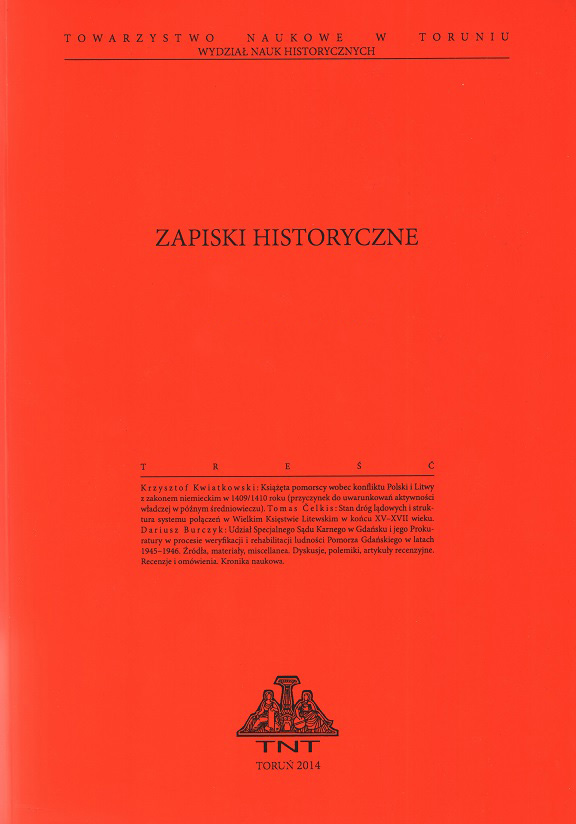Widoki portretowe Krakowa czasów staropolskich w badaniach historii miasta
Views of Cracow from the Old Polish Times in the Research of the History of the City
Picture, Sign, Symbol, Text
Author(s): Waldemar KomorowskiSubject(s): Cultural history, Visual Arts, History of ideas, Local History / Microhistory, Modern Age
Published by: Towarzystwo Naukowe w Toruniu
Keywords: views of European and Asian cities;iconography;laudatio urbis;the history and culture of Cracow
Summary/Abstract: The article constitutes an overview of the most important views of Cracow in the Old Polish times. The keynote is the presentation of specific representations (11 views have been discussed) along with the rules of showing the city and – which is the basic thesis – their subjective interpretation in the social and political context. A view beyond the axiomatic principle of the faithfully portrayed urban space usually carried out interpretations which were more or less visualized (both by their creators and recipients). It should be read as a testimony of the epoch, exploring the circumstances of their creation and possible cultural analysis. The first of the discussed representations is the view in the work of Hartman Schedel of 1493; it is not so much the real image of the city as its sign – it corresponds to the views of the city landscape at that time. The second view, from 1537, probably by Mathias Gerung, despite being generally the faithful reflection of the reality, omits many details or distorts them. However, the first representation which faithfully presents the details is the view of 1581; however, it, in turn, deforms the urban space (which, incidentally, was a conscious choice of the creator). Two views in Civitates orbis terrarum by Georg Braun and Franz Hogenberg, published in 1617, are the most informative views presenting Cracow. The latter is the most beautiful picture of the capital city and it also became the source which was later used by the creators of the next panoramas of Cracow, who changed the prototype more or less uncritically (1619, 1696, the second quarter of the 18th century). A breakthrough in the representation of the city, rooted in modern thinking, was the “rationalist” view of 1785. Iconography, like any historical source, is subject to critical review; it should also be – for verification purposes – confronted with other archival sources. In this process, methods from the area of art history, history of architecture, urban planning and historical landscape architecture are applied. There are mutual relations between iconography and written communication; iconography can be the complement, but it can also be the main source, or even the only one.
Journal: Zapiski Historyczne
- Issue Year: 84/2019
- Issue No: 1
- Page Range: 135-167
- Page Count: 33
- Language: Polish

